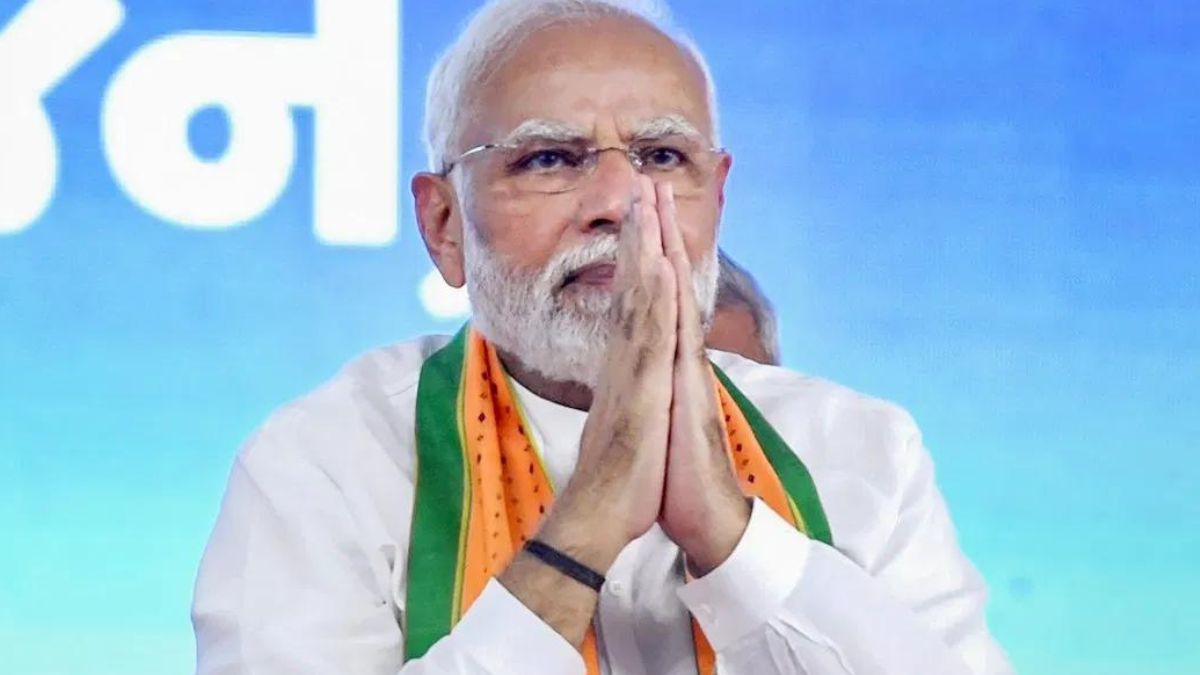Several heads of state from neighbouring countries will be present at Prime Minister Narendra Modi’s swearing-in ceremony tomorrow.
The Ministry of External Affairs has said leaders from Sri Lanka, Maldives, Bangladesh, Mauritius, Nepal and Bhutan have been invited in keeping with India’s steadfast commitment to its ‘Neighbourhood First’ policy and the Security and Growth for All in the Region (SAGAR) vision.
🇮🇳’s Neighbourhood First & SAGAR vision in action!
— Randhir Jaiswal (@MEAIndia) June 8, 2024
The swearing-in ceremony of Prime Minister & Council of Ministers is scheduled tomorrow.
🎥 Know the esteemed guests from 🇮🇳’s neighbourhood & Indian Ocean region participating in the ceremony. pic.twitter.com/jpj65A9ddY
The Ministry of External Affairs (MEA) in an official statement on Saturday said, “President of Sri Lanka, Ranil Wickremesinghe; President of Maldives, Mohamed Muizzu; Vice-President of Seychelles, Ahmed Afif; Prime Minister of Bangladesh, Sheikh Hasina; Prime Minister of Mauritius, Pravind Kumar Jugnauth; Prime Minister of Nepal, Pushpa Kamal Dahal ‘Prachanda’; and Prime Minister of Bhutan, Tshering Tobgay, have accepted the invitation to attend.”
But what do we know about it?
Let’s take a closer look
What is it?
India launched its SAGAR vision in 2015.
As per The Hindu, Prime Minister Narendra Modi unveiled the term during his visit to the Indian Ocean island states of Seychelles, Mauritius, and Sri Lanka.
Impact Shorts
More ShortsModi laid out the vision for the initiative during a keynote speech to the Indian Ocean Rim Association (IORA).
“Our vision for the Indian Ocean Region is rooted in advancing cooperation in our region and to use our capabilities for the benefit of all in our common maritime home,” Modi said as per Byjus.
ORF describes the SAGAR vision as proposing security as a collective pursuit based on shared interest.
It said the plan is a framework of morality that respects the “legitimate strategic imperative of all civilised nations.”
The idea behind SAGAR is to fortify India’s economic and security connections with its maritime neighbours, as per News18.
The plan is also aimed at helping them advance of their maritime security capabilities.
New Delhi has said it will cooperate with its neighbours under the scheme when it comes to sharing information, coastline surveillance, infrastructure development, and capability enhancement.
External Affairs Minister S Jaishankar at the fourth Indian Ocean Conference said the SAGAR vision is meant to be “consultative, democratic and equitable,” as per News18.
Objectives
According to DrishtiIAS, the scheme is meant to protect India’s national interest.
It also looks to guarantee that the Indian Ocean region becomes ‘inclusive and collaborative’ and that nations respect international law.
India is also looking to explore the benefits of the Blue economy under the SAGAR initiative.
This includes creating jobs, achieving energy independence, creating ecological resilience and strengthening connectivity with neighbours.
According to Byjus, the vision initiative can be defined as the following:
Security: Enhancement of coastal security so that land and maritime territories can be safeguarded with relative ease.
Capacity Building: Deepening economic and security cooperation for smooth facilitation of economic trade and maritime security.
Collective Action: Promoting collective action to deal with natural disasters and maritime threats like piracy, terrorism and emergent non-state actors.
Sustainable Development: Working towards sustainable regional development through enhanced collaboration
Maritime Engagement: Engaging with countries beyond our shores with the aim of building greater trust and promoting respect for maritime rules,
norms and peaceful resolution of disputes.
The scheme also gains significance as it is meant to counter China.
Beijing through its Belt and Road Initiative (BRI) has been attempting to increase its sway in the Indian Ocean Region over the past few years.
This is part of its larger ‘string of pearls’ theory.
Initiatives
According to ORF, India under SAGAR initiative carries out patrols and naval exercises with Japan, Australia, the US, Bangladesh, Myanmar, Indonesia, and Thailand.
These exercises aim to enhance cooperation between the nations and target illegal activities such as maritime terrorism, IUU fishing, drug trafficking, human trafficking, and armed robbery.
India also launched Mission Sagar on 10 May, 2020, as part of its plan to deliver aid to its neighbours during the COVID-19 pandemic.
As part of this Mission, INS Kesari visited Maldives, Mauritius, Madagascar, Comoros and Seychelles to deliver assistance to our maritime neighbours.
Kesari returned to India on 28 June, 2020, after travelling 7,500 nautical miles over 55 days.
India’s humanitarian assistance included supplies of essential food items, medicines, Ayurvedic medicines and deployment of Medical Assistance Teams (MAT) to Mauritius and Comoros.
PM Modi swearing in
The swearing-in ceremony of PM Modi and the Council of Ministers is slated for Sunday evening.
The seating arrangement has been done for over 8,000 guests who will be attending the ceremony. The list has been prepared and invitation cards have been sent. The guest list includes labourers, lawyers, doctors, artists, cultural performers, and influencers.
There were speculations that the oath ceremony might be held at Kartavya Path but because of ongoing weather conditions, it was confined to Rashtrapati Bhavan.
Modi’s leadership of the NDA was formally endorsed, with crucial support from the Telugu Desam Party (TDP) and the Janata Dal (United).
The NDA commands a strong position in the Lok Sabha with 293 MPs out of 543. Among these, the BJP holds the largest share with 240 seats.
In the 2019 elections, the BJP secured a total of 303 seats.
With inputs from agencies


)

)
)
)
)
)
)
)
)



